New York City voters will head to the polls on June 24 to make their choices for already competitive primaries for major seats, including mayor.
Here's everything you need to know before you cast your ballot.
Who can vote in a primary election?
New York’s primaries are closed primaries. To vote in a political party’s primary election, you need to be registered as a member of that party.
For example, if you want to vote in the Democratic primary for mayor, you need to be registered to vote as a member of the Democratic Party.
When is the deadline for a new voter to register?
If you are registered to vote by June 14, you are eligible to vote in the primary election.
If I am already registered to vote, can I change my party registration?
The deadline to do so has passed. The last day voters could change their voter registration for the June primary was Feb. 14.
How do I find my polling place?
If you’re a New York City voter, you can enter your address at https://vote.nyc/page/find-your-poll-site to find your early voting and Election Day polling place. Note that your early voting polling place could be different from your Election Day polling place.
The New York City Board of Elections recommends double checking your polling place.
When can I vote early in the primary?
Early voting starts Saturday, June 14 and ends Sunday, June 22.
What’s on my ballot?
New York City voters this year will select a mayor, public advocate and city comptroller, as well as City Council members and borough presidents.
There’s already a lengthy list of candidates running for mayor. Mayor Eric Adams is running for reelection as an independent. Meanwhile, the list of Democrats vying for the position include former Gov. Andrew Cuomo, City Council Speaker Adrienne Adams, City Comptroller Brad Lander, Queens state Sen. Jessica Ramos, Brooklyn state Assemblymember Zellnor Myrie, Queens state Assemblymember Zohran Mamdani, former City Comptroller Scott Stringer, former Bronx state Assemblymember Michael Blake and political newcomer Whitney Tilson.
Attorney Jim Walden is also running for mayor as an independent candidate.
Curtis Sliwa, the founder of the Guardian Angels who was the GOP’s mayoral nominee in 2021, is the only Republican candidate so far.
In the Democratic primary for public advocate, the incumbent, Jumaane Williams, faces a challenge from Queens state Assemblymember Jenifer Rajkumar.
Manhattan Borough President Mark Levine, Brooklyn City Councilmember Justin Brannan and Brooklyn state Sen. Kevin Parker are candidates in the Democratic primary for city comptroller.
Whoever New Yorkers vote for in the June primary will represent their party in the general election, which takes place on Nov. 4.
What is ranked-choice voting?
Ranked-choice voting allows New Yorkers who vote in a primary to rank candidates in order of preference.
Your ballot will include a list of candidates, each of whom will have five bubbles displayed next to their names. Fill out the bubble for your top preferred candidate in the first-choice column. Then you can fill in a bubble for your second, third, fourth and fifth choices in the second, third, fourth and fifth columns, respectively.
You can rank one, two, three, four or five total candidates in order of preference on your ballot, but you cannot rank more than five. If you want to vote for only one candidate, just leave the other columns blank.
If a candidate gets 50% of first-choice votes in the first round of voting, they are declared the winner. If no candidate gets 50% of first-choice votes in the first round of voting, the candidate with the fewest vote gets eliminated. A second round of balloting then ensues, with ballots that initially had the eliminated candidate now having their “second choice” counted instead. This process continues until there are two candidates left; whoever ends up with the most votes in that two-candidate matchup is the winner of the primary.
In the 2021 Democratic primary, Eric Adams received 30.7% of the vote in the first round of balloting; since that number was less than 50%, that triggered the need for multiple rounds of ranked-choice counting. Ultimately, Adams and Kathryn Garcia were the last two candidates left, and Adams won the last round of voting by a margin of 50.4% to 49.6%.
Do I need an ID to vote?
If you are registered to vote and provided ID when you registered, you do not need ID or any other documentation when you go to vote, according to New York state law. If you did not provide an ID when you first registered, you can still vote at a polling location with an affidavit ballot.
Can I register to vote online?
Yes. New York City residents who do not have a driver’s license, permit or non-driver ID can now register to vote online through the city Board of Elections website. You can register to vote online at https://e-register.vote.nyc/. The online application allows residents to register to vote for the first time, change the name or address on their voter registration, become a member of a political party and/or change party membership.
If you have a valid New York state driver’s license, permit or non-driver ID, you will be directed to use the New York state DMV’s Electronic Voter Registration Application to either register to vote or update your voter registration. Non-New York City residents will be directed to the state Board of Elections website.
To register, you must be 18 years old by the end of this year, not be in prison for a felony conviction, not claim the right to vote anywhere else and not be found to be “incompetent” by the court. According to the state, a person convicted of a felony is allowed to vote once released, even if they are on parole or have a term of post-release supervision.
The deadline to register for the June primary is June 14. Applications must be received no later than that date to be eligible to vote in the general election.
Can I take time off work to vote?
New York state law mandates that voters with certain schedules that conflict with polling location hours get two hours of paid time off if they do not have “sufficient time to vote.”
“Sufficient time to vote” is defined by the state Board of Elections as four hours before or after your work shift.
The example the state provides is that a 9 a.m. to 5 p.m. employee whose polling location is open 6 a.m. to 9 p.m. would not be eligible for mandatory paid time off because they would have four hours after their shift to vote. However, if the shift in that scenario went from 9 a.m. to 6 p.m., employers would be required to provide paid time off because the employee would only have three hours before and after their shift.
Employees are required to give their employers two working days’ notice if they need to take paid time off to vote. Employers cannot require employees to use any of their personal time or other earned leave time to vote.
If employers refuse or fail to provide an employee with paid time off in circumstances where it was required, the state recommends speaking with a private attorney or contacting the following agencies:
For Wage Payment Purposes:
New York State Department of Labor
Division of Labor Standards
Bldg. 12, Rm. 185C,
State Office Campus, Albany, NY 12240
Tel. 888-4-NYSDOL (469-7365)
OR
New York State Attorney General's Office Labor Bureau
28 Liberty St.
New York, NY 10005
Tel. (212) 416-8700
For election law purposes, the state advises voters to contact their county board of elections.
Voting early by mail
Registered voters are now allowed to obtain early mail voting ballots by applying to the city Board of Elections, thanks to the New York Early Mail Voter Act.
All registered voters are eligible to apply for an early mail ballot.
There are several ways to apply for the early voting ballot: Use the online Ballot Request Application portal, go in person to your local county Board of Elections, or allow another person to deliver the application in person to the local county Board of Elections. For voters with a print disability, apply by using the online Accessible Ballot Application.
Applications submitted by mail need to be received by your county Board of Elections no later than 10 days before the election (June 14) in order for a voter to be eligible to vote in the June primary.
To apply virtually, voters can go to the online Ballot Request Application. The last day to apply online is also June 14. The day before the primary election — Monday, June 23 — is the last day in-person applications can be submitted.
The last day to mail an early mail ballot or to submit in-person by your designated representative is primary election day on Tuesday, June 24. If mailed, it must be postmarked by Tuesday, June 24 and received Tuesday, July 1.
How do I apply for an absentee ballot?
People who qualify for an absentee ballot have until June 14 to apply for one.
To find the New York state absentee ballot applications for English and Spanish, visit the city's website or the state's website.
To apply virtually, voters can go to the online Ballot Request Application. The last day to apply online is also June 14.
Applications submitted by mail need to be received by your county Board of Elections no later than 10 days before the primary election in order for a voter to be eligible to vote in the primary election.
In-person applications can be submitted up to the day before the primary election.
Primary election day, June 24, is the last day for an absentee ballot to be mailed or submitted in person by a designated representative.
Who qualifies for an absentee ballot?
According to the city and state Board of Elections, the following groups of registered voters qualify:
- Absent from New York City on election days
- Unable to go to the polls due to illness or disability, or because they are the primary caregiver of someone who is ill or physically disabled
- A resident or patient at a VA hospital
- In jail or prison for any reason, unless they were convicted of a felony
I’m a military service member, merchant marine, a military or merchant marine family member living away from their voting district, or a citizen living outside the United States and I need an absentee ballot, but I’m not registered to vote.
June 14 is the last day for unregistered voters who qualify for an absentee ballot to apply.
How do I vote with an absentee ballot or an early mail ballot?
Fill out your ballot like you would any ballot, following the instructions included. Make sure you sign and date the security envelope before returning your ballot.
Both ballots can be mailed back, dropped off at either an early voting or election day poll site during those poll sites' operating hours, or dropped off at a local Board of Elections office before or on election day. If you are mailing it, the ballot must be postmarked by June 24 and received by July 1.
What if I requested an early mail or absentee ballot and decided to vote at the polls?
You can, but you will be given an affidavit ballot instead of being able to use a polling machine so the Board of Elections can first determine if you are an eligible voter. This was a change adopted in New York state in 2021 after chaotic ballot counting in a 2020 upstate congressional race delayed the race being called for months.
What happens if I’m turned away at the poll?
There are a few reasons you could arrive at your polling place and be told you can’t vote.
First, double-check you’re at the right polling place by visiting https://vote.nyc/page/understanding-ballot. If you are and are still being turned away, it is possible you may not have registered in time or, if you recently moved, you haven’t changed your registration to your current address.
Ask poll workers to check if you are registered to vote in another borough. If poll workers cannot help, contact or visit your local elections office, which can be found here.
It is also possible you have been marked an inactive voter, in error by the Board of Elections or because you have not voted in two consecutive federal elections over the course of five years.
If you are still being told you are not on the voter rolls, you can request an affidavit ballot from a poll worker. Filling out this ballot will allow you to attest you are eligible to vote and participate in the election. The city’s Board of Elections will then verify whether you are eligible or not. If you are, your vote will be counted. If not, they will contact you with a notice you are not eligible and paperwork for you to register for future elections.
Who can I call if poll workers or others are obstructing me from voting?
If you face issues at the polls that cannot be solved by calmly and clearly communicating with poll workers on the ground, you have several options.
Government agencies that can help you exercise your right to vote:
- New York Election Hotline: (866) 390-2992
- The U.S. Department of Justice Voting Rights Hotline: 1-800-253-3931
A coalition of civil rights groups have also put together a series of multilingual hotlines that can help with each step of the voting process:
- English: 866-OUR-VOTE – Lawyers’ Committee for Civil Rights Under Law
- Spanish/English: 888-VE-Y-VOTA – NALEO Educational Fund
- Arabic/English: 844-YALLA-US – Arab American Institute (AAI)
- Asian Languages/English: 888-API-VOTE – APIAVote & Asian Americans Advancing Justice (AAJC)
Does my vote matter?
Yes. Voter turnout in New York is notoriously low, adding extra weight to the votes of New Yorkers who do show up to the polls.
If you’re a first-time voter or unsure how the process works, voting in person may be easier because poll workers will be on hand to answer any questions you may have.
Can I check poll wait times online?
No. The city and the state do not currently offer the ability to check poll wait times online.
Can I bring my dog to a polling station?
Pet owners are generally discouraged from bringing them — or any animal — to the polls, unless they help with accessibility.




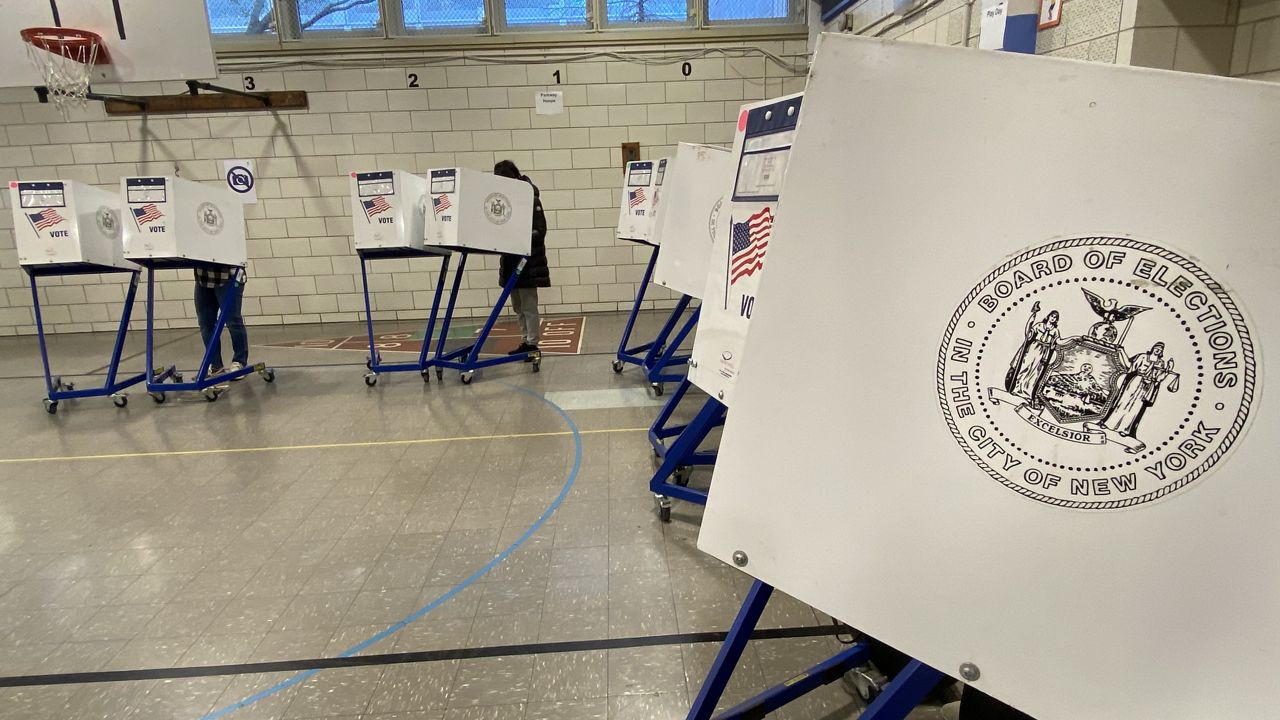
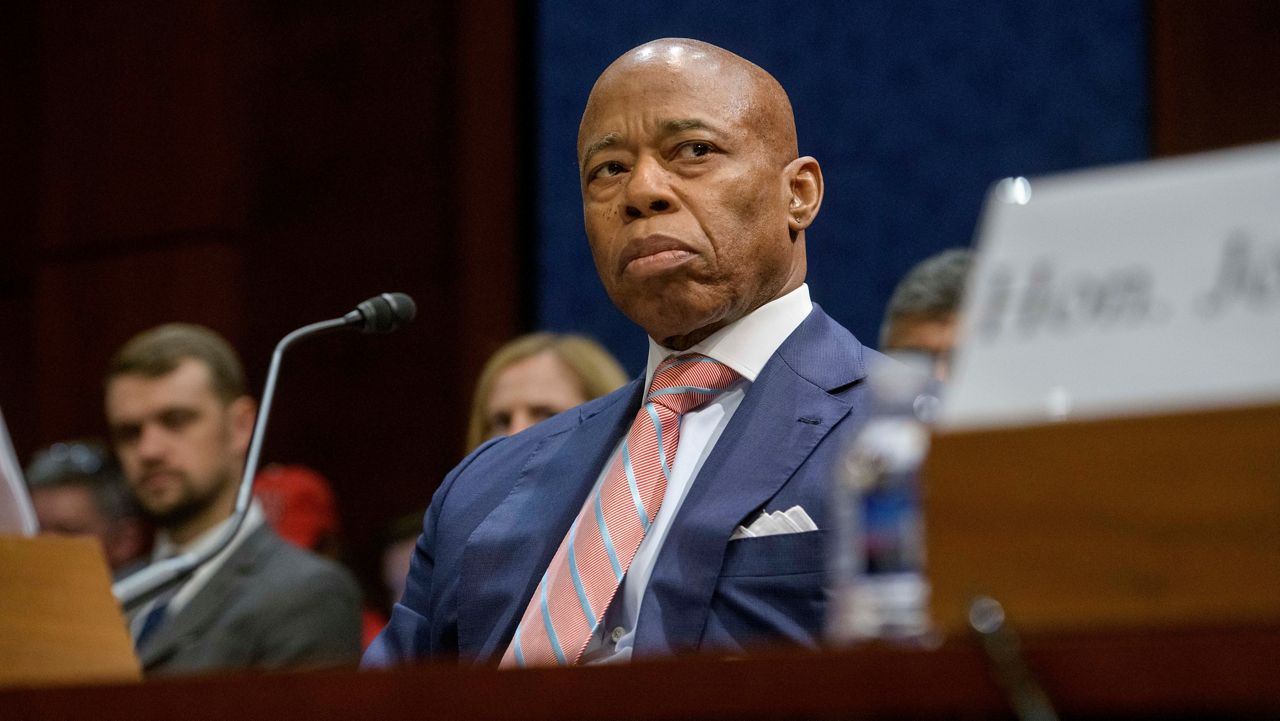
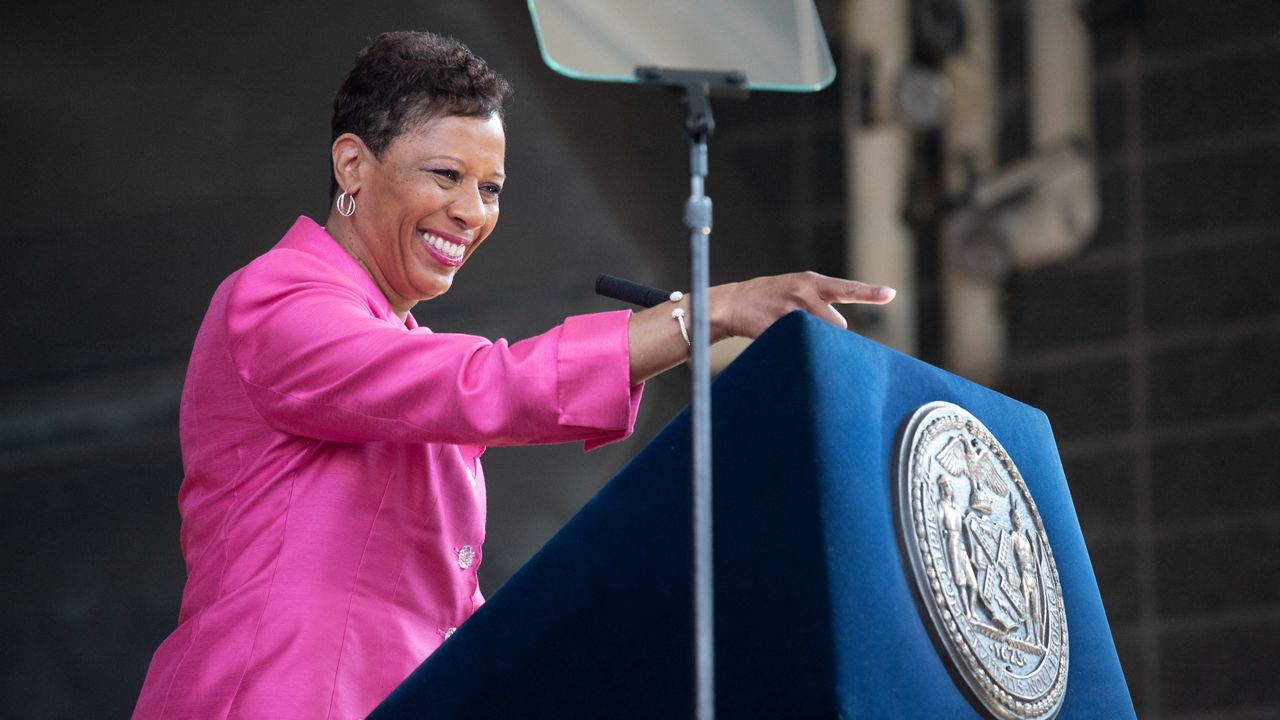
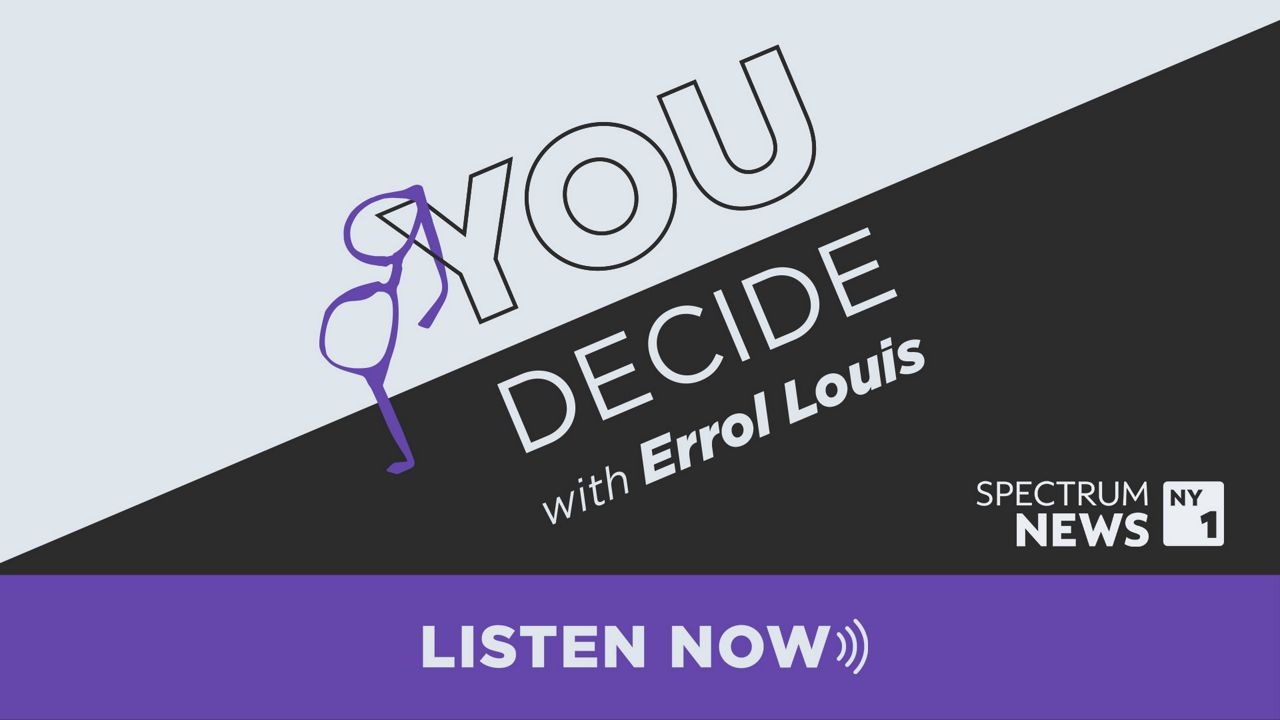
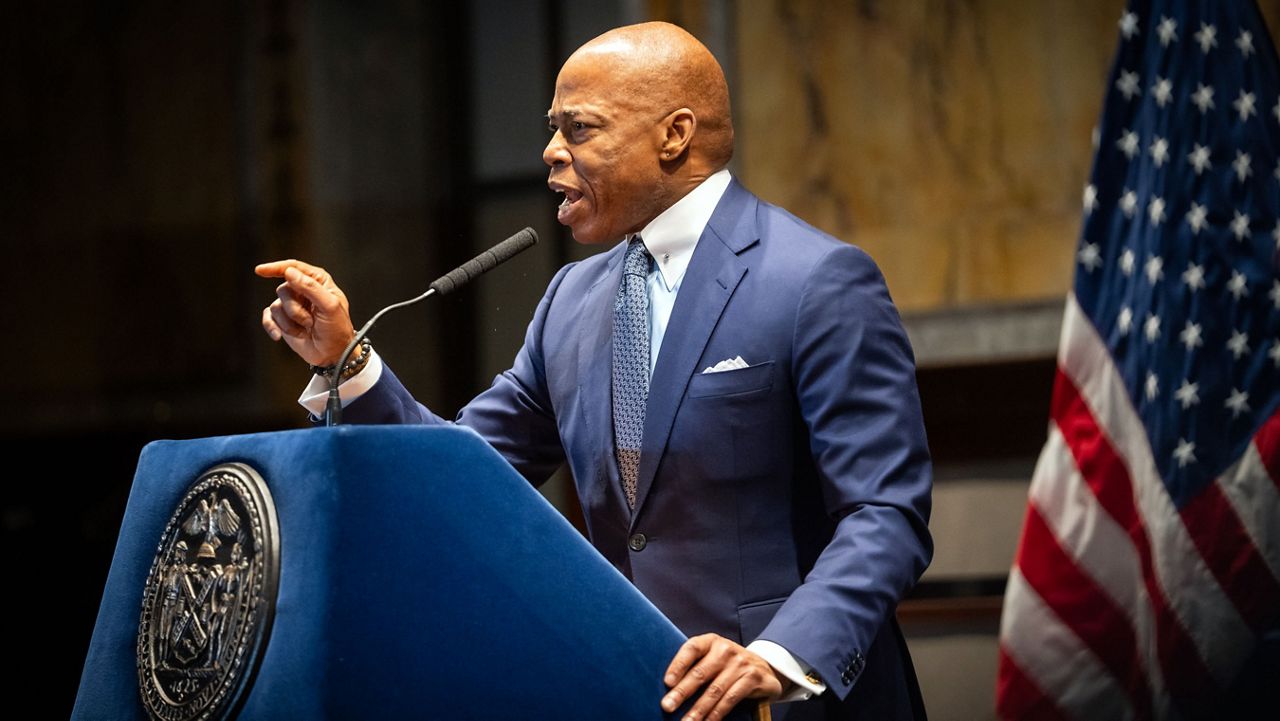
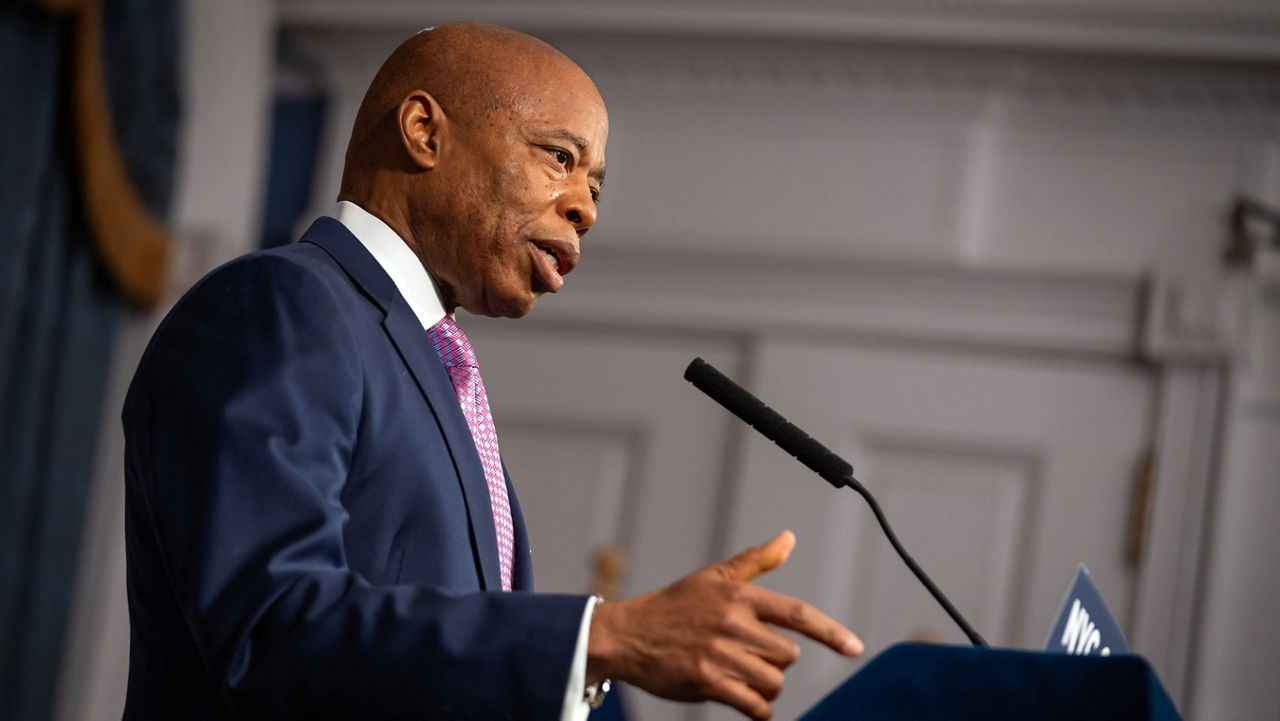
_DNT_Charter_Revision_CLEAN)